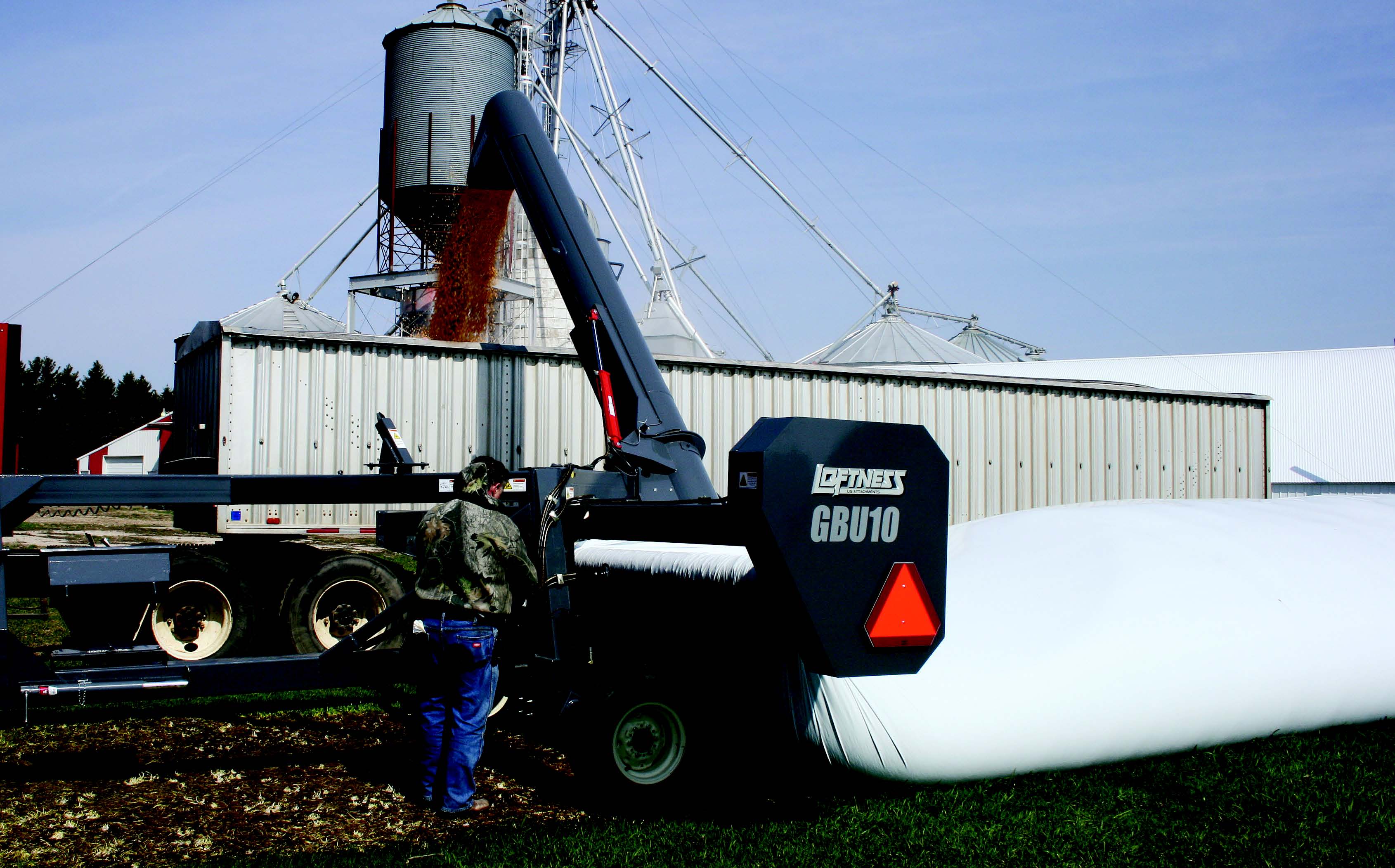For full list of articles from the 2010 Sourcebook, click here.
Surpassing 300 bushels on the combine monitor doesn’t equate to 300 bushels at market. There is still the potential for grain loss if it isn’t stored properly or if loading, unloading and truck turnaround slow harvest. As yields grow and farmers in non-traditional corn-producing areas switch to corn, proper storage and handling becomes an issue.
Dave Nelson, vice president of Loftness, says he’s seen sales of his family’s bagger systems double in the last 3 years.
“There has been an increase in use of bagging systems as yields go up,” Nelson says. “Elevators and on-farm storage are not growing fast enough and have not able to keep up with increasing yields.”

There has been an increase in use of bagging systems as yields go up because elevators and on-farm storage are not growing fast enough to keep up with increasing yields. With flexible storage growers can keep harvesting, store the grain until the drier is available and get the crop out of the field.
Bagging systems can provide producers with a flexible storage option that will help keep harvest moving.
“In the upper Corn Belt, snow and moisture limit harvest time,” Nelson says. “Harvest can get held up if they lack storage or if the corn is wet and they don’t have enough drier capacity. With flexible storage they can keep harvesting, store the grain until the drier is available and get the crop out of the field.” Grain baggers can be an ace in the hole for grain marketing.
“If you don’t have enough storage you can’t market grain properly,” says Chris Finck, general manager of Show- Me Shortline which carries Richiger Flexi-Grain Storage baggers. “Prices are usually lowest at harvest so being able to store grain and still keep the combines running will allow producers to take advantage of better prices.”
The alternative is to take lower prices — which can limit investment in yield-boosting technologies — or store grain on the ground where it is vulnerable to losses.
“Grain stored on the ground gets rained on and crusts on the top while rotting from the bottom, leading to losses of 10% or more,” Nelson says. “Bags seal moisture out so there is significantly less spoilage.”
Loftness bags can hold up to 33,000 bushels. The bagger will cost producers $25,000. The grain bag unloader, which can load a semi-truck in 6-7 minutes, runs $35,000. The one-time-use bags cost 5-6 cents per bushel. While this may seem like a lot, Nelson says in the long run it’s the cheaper option.
“Grain bins cost $2 per bushel or more to put up, and then you have to pay property taxes on them,” Nelson says. “The bagger system gives you almost unlimited storage for $60,000 plus the cost of the bag. Economically, it’s very attractive.”
And they’re improving the systems to increase efficiencies.
“Richiger is developing higher-capacity baggers,” Finck says. “Right now we can bag grain at 24,000 bushels per hour and their high-capacity unloader can fill a semi in 4.5 minutes at 12,000 bushels per hour. With this system, combines never have to sit still.”
For full list of articles from the September 2010 Sourcebook, click here. Or the links below.
To The Point: We've Got Some Work To Do
300-Bushel Corn: Answering the Equipment Challenge
Precision Ag: Better, More Affordable RTK
Planting & Seeding: Where Increased Yields Start
The Dealer's Role in Doubling Corn Yields
Needed: Taller, Narrower, Smarter Sprayers
Harvest Right or Today's High Yields Become Tomorrow's Struggling Yields
Tillage Tools: Working to Combine Functions





